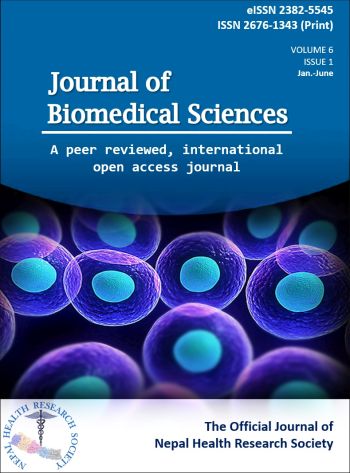Targeting NLRP3 signaling reduces myocarditis-induced arrhythmogenesis and cardiac remodeling
IF 9
2区 医学
Q1 CELL BIOLOGY
引用次数: 0
Abstract
Myocarditis substantially increases the risk of ventricular arrhythmia. Approximately 30% of all ventricular arrhythmia cases in patients with myocarditis originate from the right ventricular outflow tract (RVOT). However, the role of NLRP3 signaling in RVOT arrhythmogenesis remains unclear. Rats with myosin peptide–induced myocarditis (experimental group) were treated with an NLRP3 inhibitor (MCC950; 10 mg/kg, daily for 14 days) or left untreated. Then, they were subjected to electrocardiography and echocardiography. Ventricular tissue samples were collected from each rat’s RVOT, right ventricular apex (RVA), and left ventricle (LV) and examined through conventional microelectrode and histopathologic analyses. In addition, whole-cell patch-clamp recording, confocal fluorescence microscopy, and Western blotting were performed to evaluate ionic currents, intracellular Ca2+ transients, and Ca2+-modulated protein expression in individual myocytes isolated from the RVOTs. The LV ejection fraction was lower and premature ventricular contraction frequency was higher in the experimental group than in the control group (rats not exposed to myosin peptide). Myocarditis increased the infiltration of inflammatory cells into cardiac tissue and upregulated the expression of NLRP3; these observations were more prominent in the RVOT and RVA than in the LV. Furthermore, experimental rats treated with MCC950 (treatment group) improved their LV ejection fraction and reduced the frequency of premature ventricular contraction. Histopathological analysis revealed higher incidence of abnormal automaticity and pacing-induced ventricular tachycardia in the RVOTs of the experimental group than in those of the control and treatment groups. However, the incidences of these conditions in the RVA and LV were similar across the groups. The RVOT myocytes of the experimental group exhibited lower Ca2+ levels in the sarcoplasmic reticulum, smaller intracellular Ca2+ transients, lower L-type Ca2+ currents, larger late Na+ currents, larger Na+–Ca2+ exchanger currents, higher reactive oxygen species levels, and higher Ca2+/calmodulin-dependent protein kinase II levels than did those of the control and treatment groups. Myocarditis may increase the rate of RVOT arrhythmogenesis, possibly through electrical and structural remodeling. These changes may be mitigated by inhibiting NLRP3 signaling.靶向 NLRP3 信号可减少心肌炎诱发的心律失常和心脏重塑
心肌炎会大大增加室性心律失常的风险。在心肌炎患者的所有室性心律失常病例中,约有 30% 源自右室流出道 (RVOT)。然而,NLRP3 信号在 RVOT 心律失常发生中的作用仍不清楚。用 NLRP3 抑制剂(MCC950;10 毫克/千克,每天一次,连续 14 天)治疗或不治疗肌球蛋白肽诱导的心肌炎大鼠(实验组)。然后对它们进行心电图和超声心动图检查。从每只大鼠的 RVOT、右心室顶(RVA)和左心室(LV)采集心室组织样本,并通过常规微电极和组织病理学分析进行检查。此外,还进行了全细胞膜片钳记录、共聚焦荧光显微镜和 Western 印迹分析,以评估从 RVOT 分离的单个心肌细胞中的离子电流、细胞内 Ca2+ 瞬态和 Ca2+ 调制蛋白的表达。与对照组(未接触肌球蛋白肽的大鼠)相比,实验组的左心室射血分数较低,室性早搏频率较高。心肌炎增加了炎症细胞对心脏组织的浸润,并上调了 NLRP3 的表达;这些观察结果在 RVOT 和 RVA 比在 LV 更为突出。此外,接受 MCC950 治疗的实验鼠(治疗组)的左心室射血分数有所提高,室性早搏的频率也有所降低。组织病理学分析显示,实验组大鼠 RVOT 自动异常和起搏诱发的室性心动过速的发生率高于对照组和治疗组。然而,这些情况在 RVA 和 LV 的发生率在各组中相似。与对照组和治疗组相比,实验组 RVOT 心肌细胞的肌浆网中 Ca2+ 水平较低、细胞内 Ca2+ 瞬态较小、L 型 Ca2+ 电流较低、晚期 Na+ 电流较大、Na+-Ca2+ 交换电流较大、活性氧水平较高、Ca2+/钙调蛋白依赖性蛋白激酶 II 水平较高。心肌炎可能会通过电气和结构重塑增加 RVOT 心律失常的发生率。抑制 NLRP3 信号传导可减轻这些变化。
本文章由计算机程序翻译,如有差异,请以英文原文为准。
求助全文
约1分钟内获得全文
求助全文
来源期刊

Journal of Biomedical Science
医学-医学:研究与实验
CiteScore
18.50
自引率
0.90%
发文量
95
审稿时长
1 months
期刊介绍:
The Journal of Biomedical Science is an open access, peer-reviewed journal that focuses on fundamental and molecular aspects of basic medical sciences. It emphasizes molecular studies of biomedical problems and mechanisms. The National Science and Technology Council (NSTC), Taiwan supports the journal and covers the publication costs for accepted articles. The journal aims to provide an international platform for interdisciplinary discussions and contribute to the advancement of medicine. It benefits both readers and authors by accelerating the dissemination of research information and providing maximum access to scholarly communication. All articles published in the Journal of Biomedical Science are included in various databases such as Biological Abstracts, BIOSIS, CABI, CAS, Citebase, Current contents, DOAJ, Embase, EmBiology, and Global Health, among others.
 求助内容:
求助内容: 应助结果提醒方式:
应助结果提醒方式:


